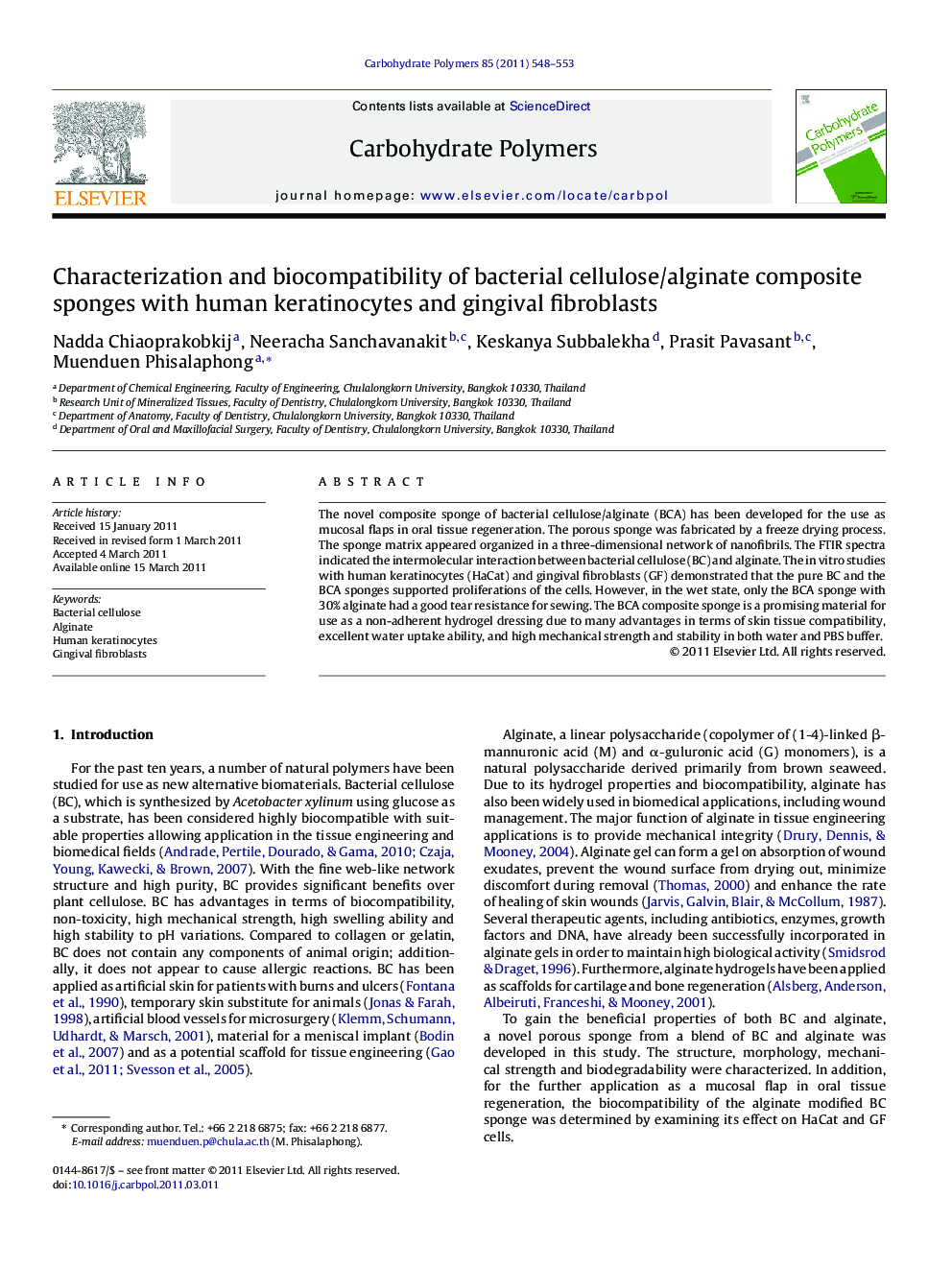| Article ID | Journal | Published Year | Pages | File Type |
|---|---|---|---|---|
| 10602319 | Carbohydrate Polymers | 2011 | 6 Pages |
Abstract
The novel composite sponge of bacterial cellulose/alginate (BCA) has been developed for the use as mucosal flaps in oral tissue regeneration. The porous sponge was fabricated by a freeze drying process. The sponge matrix appeared organized in a three-dimensional network of nanofibrils. The FTIR spectra indicated the intermolecular interaction between bacterial cellulose (BC) and alginate. The in vitro studies with human keratinocytes (HaCat) and gingival fibroblasts (GF) demonstrated that the pure BC and the BCA sponges supported proliferations of the cells. However, in the wet state, only the BCA sponge with 30% alginate had a good tear resistance for sewing. The BCA composite sponge is a promising material for use as a non-adherent hydrogel dressing due to many advantages in terms of skin tissue compatibility, excellent water uptake ability, and high mechanical strength and stability in both water and PBS buffer.
Related Topics
Physical Sciences and Engineering
Chemistry
Organic Chemistry
Authors
Nadda Chiaoprakobkij, Neeracha Sanchavanakit, Keskanya Subbalekha, Prasit Pavasant, Muenduen Phisalaphong,
